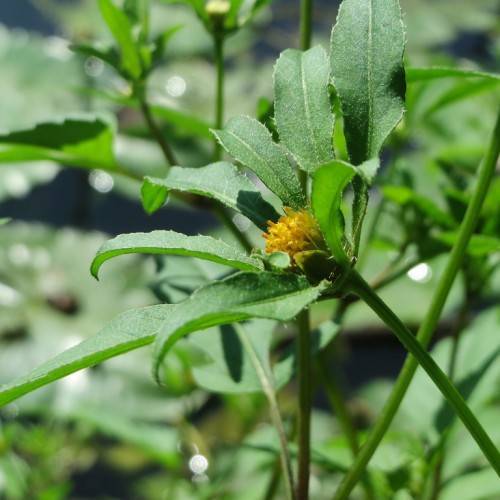
Beggarticks
Bidens tripartita
Also Known As - Three Lobe BeggarticksWatering:
Average
Hardiness Zone:
Sun:
full sun
Fruits:
Fruits Ready In Fall
Leaf:
Yes
Growth Rate:
Low
Drought Tolerant:
Yes
Salt Tolerant:
Yes
Invasive:
Yes
Tropical:
Yes
Care Level:
Medium
watering
Hairy Beggarticks should be watered lightly but frequently, allowing the soil to dry out slightly between waterings. Watering should be done at least once per week, but more often during drier and warmer weather. When watering, it is important to thoroughly soak the soil, but not to overwater or leave the soil soggy. Overwatering can result in root rot.
sunlight
Hairy Beggarticks (Bidens pilosa) is a plant species that needs a lot of sunlight to survive and thrive. A minimum of 6 to 8 hours of sunlight a day is recommended for this species, although it can handle up to 12 hours a day without damage. The plant prefers full sun, but can tolerate some shade.Hourly sunlight intensity should be full or at least half-full at all times of the day. Too little sunlight can lead to weakened growth, particularly in the summer months. During the winter months, however, it is important to provide some morning sunlight to prevent the plants from going into dormancy and to help them continue to produce fruits and flowers.
pruning
Many gardeners choose not to prune Hairy Beggarticks (Bidens pilosa), as it does not produce a more attractive structure and may lead to less flower production. If you do choose to prune it, it is important to do so at the right time. Pruning should be done late in the season after flowering has finished and just before the plant goes dormant. Be sure to use sharp, clean pruning scissors and avoid cutting into new growth. This will help to reduce the spread of any disease. Prune the plant back to just a few inches in order to keep it from spreading. This type of pruning may need to be repeated each season in order to maintain a desired shape and size.
